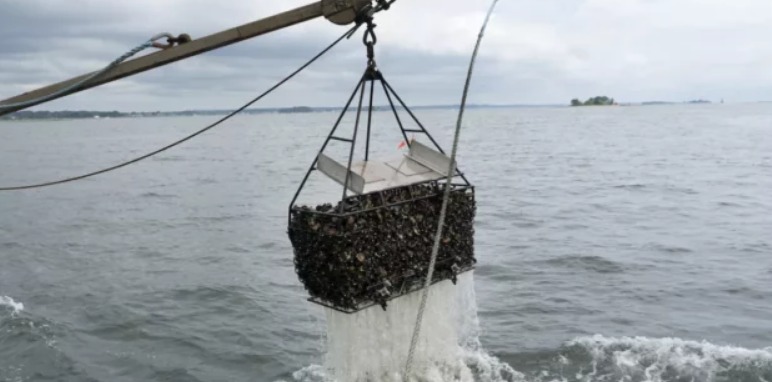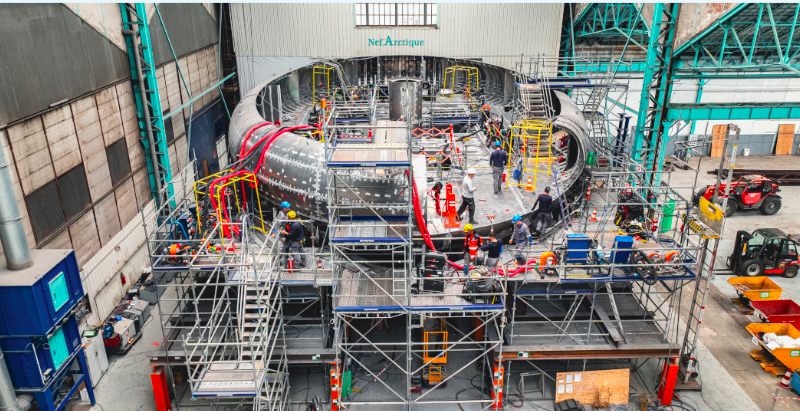Shellfish farming and seagrass cultivation can help restore coastal ecosystems, provided farmers are willing to work with nature.
Stories of the Amazon in decline are hard to ignore – and hard to digest. To make way for cattle ranches, poor farmers light fires and cut down ancient trees, some more than 1,000 years old.
A short distance to the east, another old-growth forest is suffering, but the culprit is a different type of livestock: shrimp. Like the Amazon, mangroves are among the richest ecosystems on the planet, teeming with tropical fish and birds like the roseate spoonbill. Shrimp ponds fill coastal waters with shrimp waste, which drifts and chokes nearby mangroves.
Aquaculture is one of the fastest growing food industries in the world, driven in many cases by government funding and often at the expense of the environment as coastlines are cleared to make way for farms fish, algae and shellfish farming.
But some see an opportunity for compromise, even collaboration, between ocean farmers and nature, especially in places that are not as pristine as the Amazon. Shellfish and algae are valuable crops, but they are also important species that have become extinct in ecosystems around the world. A broad coalition of politicians, scientists, farmers and green organizations are touting “restorative aquaculture” as a way to use growing demand for seafood to bring back lost coastal habitats and wildlife.
“It will continue to grow. . . . So how can we guide this growth to be as sustainable as possible? says Robert Jones, global aquaculture manager for the Nature Conservancy. In partnership with marine science researchers, the organization studies the potential of aquaculture to restore ecosystems. Alongside members of the World Bank, the University of New England, the World Wide Fund for Nature and the Food and Agriculture Organization of the United Nations, they plan to release a document outlining the principles fundamentals of “restorative aquaculture” later this year.
Amid global pressure for greater seafood production, remedial aquaculture could represent a way to provide food and create jobs while rebuilding oyster and other reefs habitats lost over the centuries. But even shellfish and algae farming have environmental costs, and some doubt the industry can grow while still leaving room for nature.
Seafood and seaweed cultivation is increasing, but natural habitats built from seafood and seaweed are decreasing. Researchers and conservationists saw an opportunity. “We started looking at commercial aquaculture from a restoration perspective: Can it help us accelerate or achieve some of the goals we’ve had for years, but at a much lower cost? Jones said. The idea is gaining ground. The Ocean-Based Climate Solutions Act, introduced earlier this year, directs the government to establish a program to “address the opportunities, challenges and innovation in restorative ocean aquaculture.” Among the main places that researchers say could benefit from restorative aquaculture: the East Coast of the United States.
Oysters grew like weeds in the Chesapeake Bay, but European settlers picked them by the millions, and centuries of disease and encroaching waterfront industries reduced them to less than 1 percent of their former numbers. “There’s just no other way to look at it than gross mismanagement,” says Jackie Shannon, Virginia oyster restoration manager at the Chesapeake Bay Foundation, which works to restore the parks. lost oysters. The organization uses old shells donated by restaurants to catch oyster larvae as they float, giving them a place to settle and grow.
Bringing back wild oysters has been a boon for the bay. Oysters build their own habitat, growing on top of each other and giving shape to an otherwise shapeless mudflat. This means more surface area for algae and other microscopic species to grow, for grazers like crabs and starfish to move around and hide, and for large predators like striped bass to hunt.



